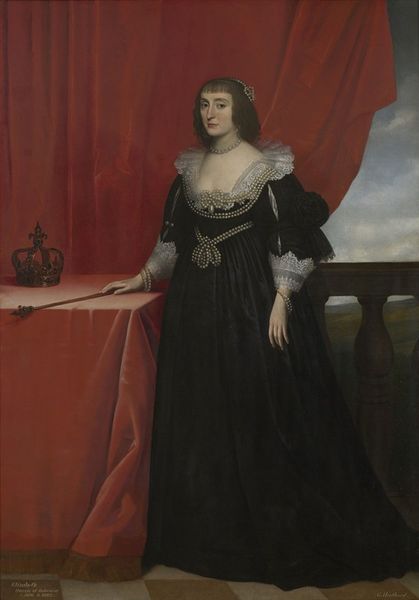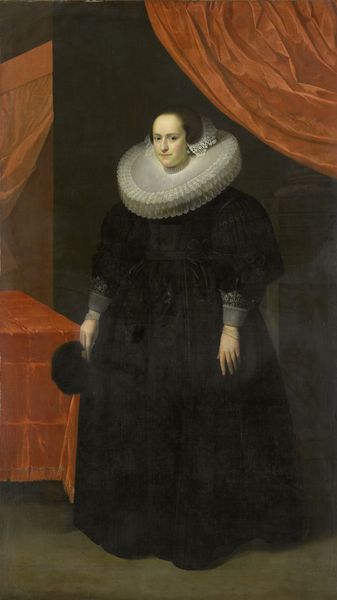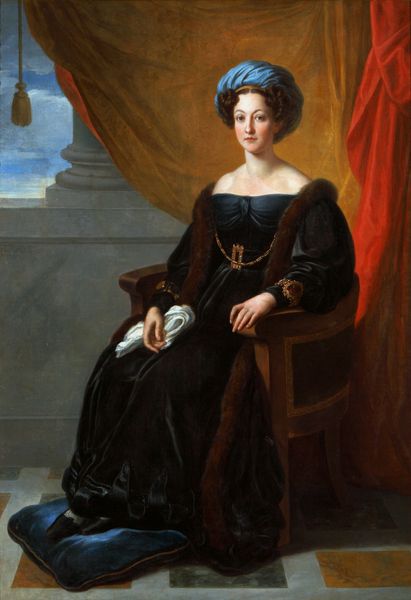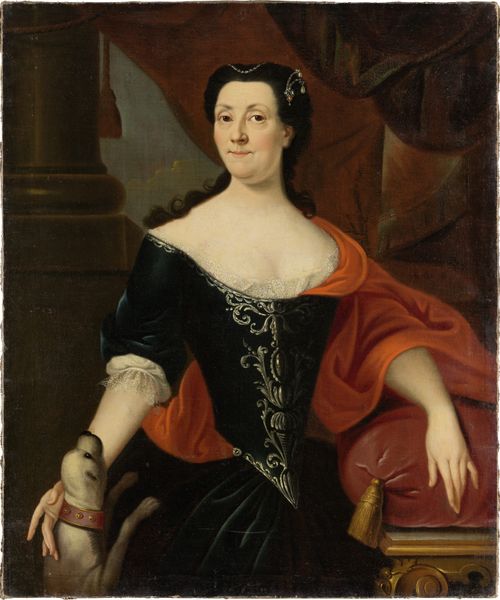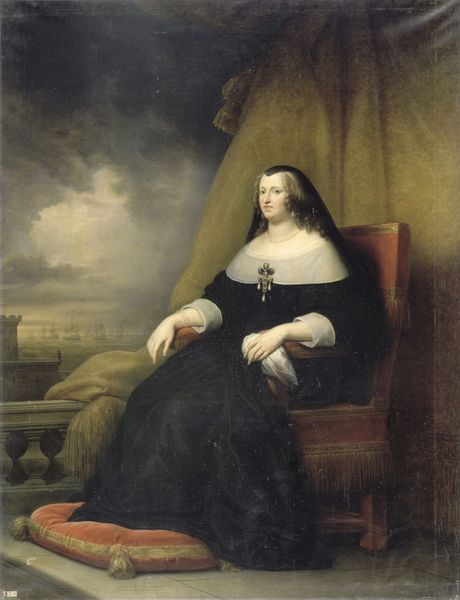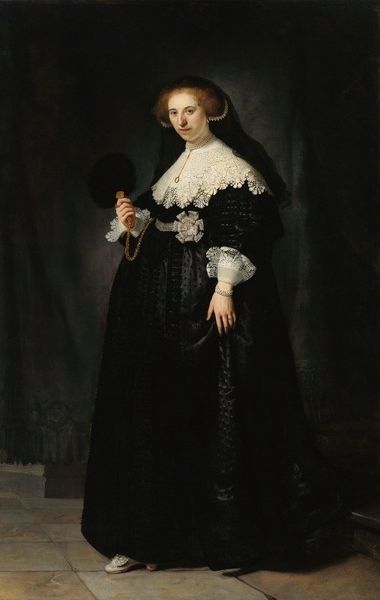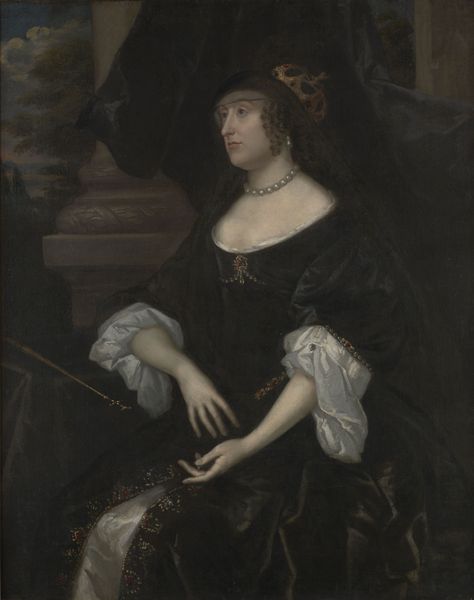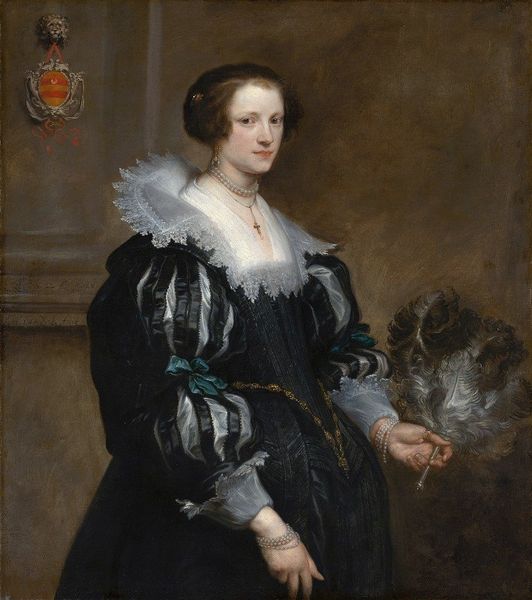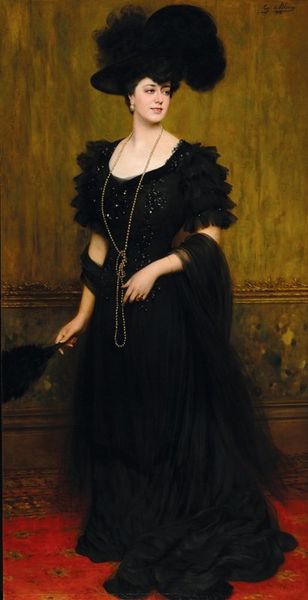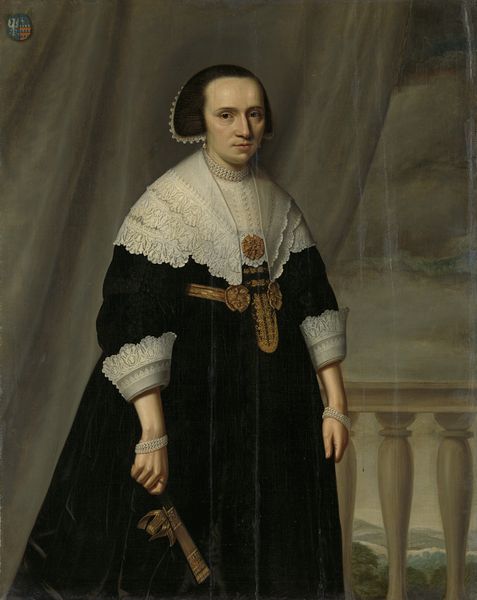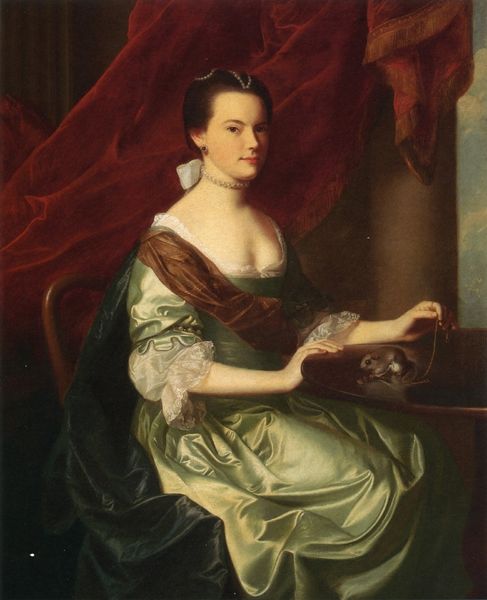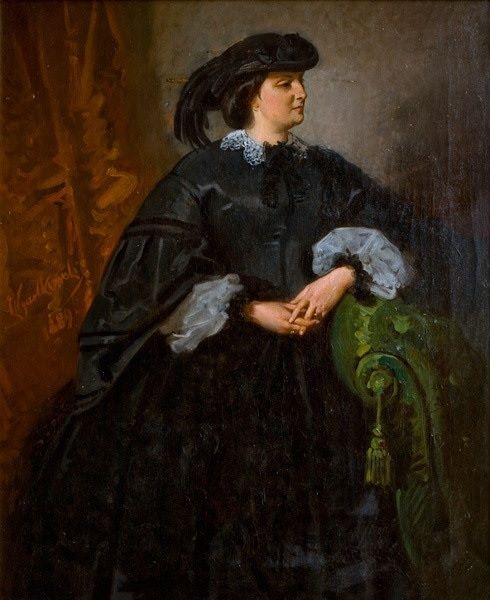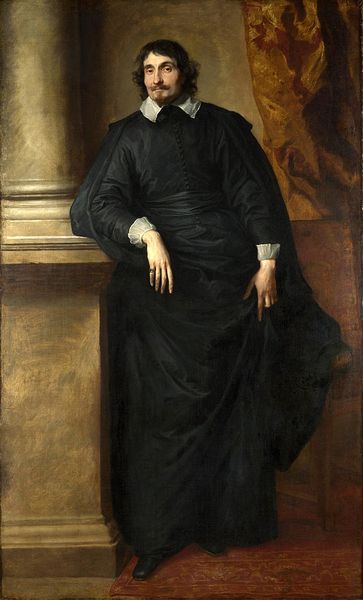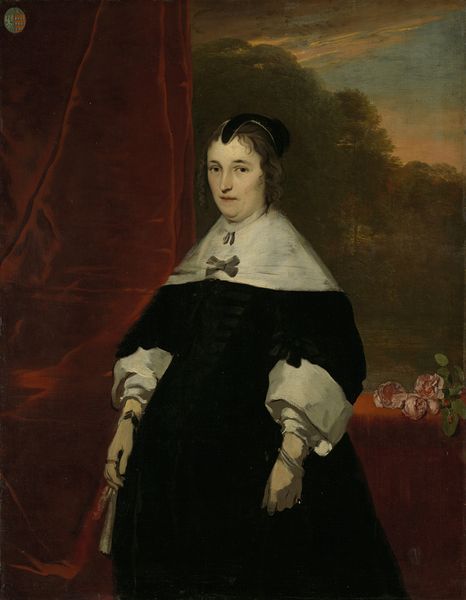
Maria Hartmansdr de Custer(e). Echtgenote van Willem Kettingh c. 1640 - 1755
0:00
0:00
painting, oil-paint
#
portrait
#
baroque
#
painting
#
oil-paint
#
genre-painting
Dimensions: height 207 cm, width 122 cm, depth 7.5 cm, weight 21 kg
Copyright: Rijks Museum: Open Domain
Curator: Good morning. Here we have a piece entitled "Maria Hartmansdr de Custer(e). Echtgenote van Willem Kettingh," an oil painting attributed to Mattheus Verheyden, dating approximately from 1640 to 1755. Editor: My first impression is one of quiet dignity, and perhaps a touch of melancholy. The palette is rather muted, dominated by blacks and greys, with only the pale skin and small flower offering much contrast. There’s a sense of formality, wouldn’t you agree? Curator: Absolutely. It reflects the societal expectations of women, particularly married women, during the Baroque period. Her dark, voluminous dress could represent mourning or piety. There's an interesting tension between the visible symbols of wealth and the suppression of individual expression. It asks, in a way, "Who gets represented in these portraits, and what narratives are they allowed to convey?" Editor: The very structure seems to uphold the dominant patriarchal standards: a pillar next to her with what appear to be family symbols—a demonstration of stability or, rather, a woman tied to societal structures? What I am curious about is, does this conform to the historical perception of women as objects of decor and social affirmation for men of their status? Curator: In part, yes, that framework cannot be dismissed. But her direct gaze subverts complete objectification. Is it possible that within such rigid structures, expressions of selfhood, perhaps resistance, subtly take shape through portraiture? The small pearl tiara and rose could hint at that assertion of self in an otherwise restrained presentation of identity. Editor: Yes, I concede that the delicate accessories bring depth. Though, in examining the setting—an exterior backdrop fading away—are we meant to believe the domestic sphere as secondary to this woman? Curator: A possible argument for how the sitter positions herself within her society—challenging its constraints? Perhaps the artist attempts to suggest something beyond merely the decorative. Editor: It provides valuable insight into how people of her class sought representation. Thank you. Curator: Thank you; it enriches our understanding of art's complex relationship to both mirroring and reshaping cultural norms.
Comments
No comments
Be the first to comment and join the conversation on the ultimate creative platform.
